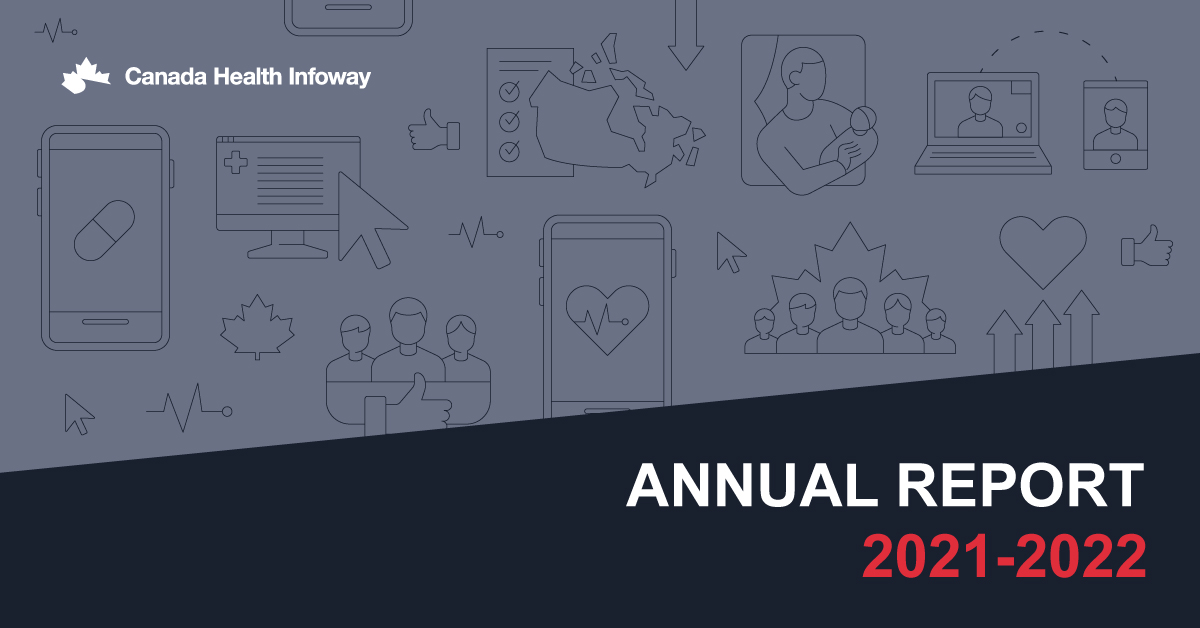I’d like to share a few highlights here:
- We expanded PrescribeIT®, Canada’s e-prescribing service, to two more provinces. Prescribers and patients in Saskatchewan, and Newfoundland and Labrador, can now enjoy convenient, safe and efficient electronic prescribing instead of dealing with paper or faxed prescriptions. The service is also operating and expanding in Ontario, Alberta and New Brunswick, and we are planning to add new jurisdictions this year.
- Enrollment of prescribers and pharmacists grew significantly over the past year, with more joining since the onset of the COVID-19 pandemic. We also added new vendors and expanded the functionalities to include bilingual support and more prescriber roles, such as nurse practitioners.
- We continued to grow the ACCESS 2022 social movement, which engages Canadians who share the vision of all citizens having access to their health information and to digital health tools and services, from the device of their choice.
- Our ACCESS Health program worked with partners across the country to accelerate much-needed online services, such as patient portals and e-mental health solutions. This included scaling Crisis Text Line powered by Kids Help Phone across Canada, and working to expand Newfoundland and Labrador’s successful Bridge the gapp solution to the three other Atlantic provinces.
- We also started a proof-of-concept for the ACCESS Gateway platform – an identity, access and consent management service that will be available for a select set of digital health solutions this fiscal year.
There are two other key things I’d like to mention.
First, when the COVID-19 pandemic began near the end of our fiscal year, the provinces and territories quickly recognized the need to help their citizens connect virtually with care providers to ensure everyone’s safety. We worked with the jurisdictions, and Health Canada, to reallocate existing funding to invest in virtual care and other services that will be available during the pandemic and beyond. We estimate that nearly 65,000 health care providers and more than 1.2 million Canadians will benefit from these investments.
Second, while we have been working with the provinces and territories to improve Canadians’ access to care, we are continuing to realize significant value from our co-investments in foundational digital health systems. Since 2007, we estimate $35 billion in benefits to Canadians and our health system from: connected health information, telehealth and telehomecare, drug information systems, diagnostic imaging; and electronic medical records in physicians’ offices and ambulatory clinics. That includes $4.9 billion in 2019-2020.
These benefits will continue to grow as more clinicians and Canadians use digital solutions and services. For example, there’s a tremendous opportunity with virtual care. Before the pandemic, between 10 and 20 per cent of primary care visits were virtual. Shortly after the pandemic began, that had increased to about 60 per cent. If we can sustain virtual care at 50 per cent of all primary care visits, Canadians would save about 103 million hours in travel time each year, along with $770 million in avoided associated expenses. It would also be great for our environment – reducing CO2 emissions by 325,000 metric tonnes annually.
We are proud of our collective achievements during 2019-2020 and the strong, collaborative relationships we have developed and grown with new and existing partners and stakeholders. We look forward to continuing to work together to connect Canadians through health care innovation.
I invite you to read our 2019-2020 Annual Report, and let me know what you think about our progress and our direction. I’d love to hear from you!
Have a comment about this post? We’d love to hear from you.




